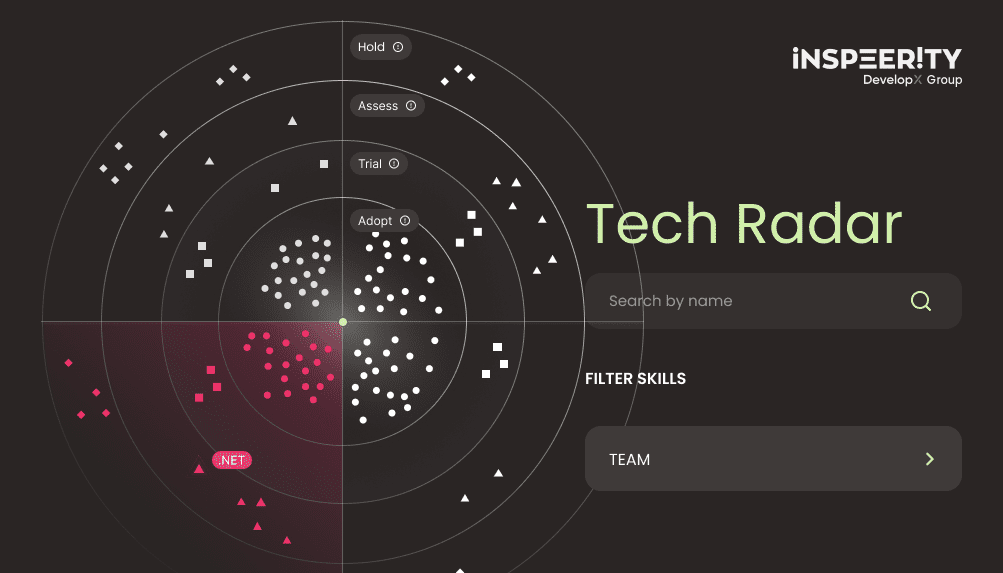Designing a ticketing platform starts with one essential question. What do you want the system to do? The answer shapes everything from infrastructure to spending on servers, storage, and support. It affects how fast you can deliver features and how well your system scales with demand.
With the right plan, you can:
- Balance real-time and batch data processing
- Control infrastructure and cloud costs
- Speed up design timeframes
- Stay flexible as your system scales
Ticketing platforms handle huge amounts of data. For some, instant processing is a priority, while for others, high availability. Amazon focuses on high availability, while data integrity and processing are critical for payment processors. Making architectural decisions means understanding your business goals and priorities first. Do you expect traffic spikes? Do you plan to apply dynamic pricing? How are you handling fraud risks? Where is the efficiency of your system getting lost? That’s a lot to think of at once.
In today’s blog, I will focus on one key area. What data matters in ticketing, how it shapes architecture, and how real-time thinking pays off.
What data matters in ticketing?
When it comes to your platform, you don’t need to track everything, just the right things. Knowing what data matters helps you keep your system fast, efficient, and easy to manage. It allows you to safely choose trade-offs that affect performance and cost. Let’s break down the key signals you should pay attention to.
Traffic & demand trends
Ticketing platforms must predict and respond to fluctuations in demand. Analyzing web traffic, search volume, and user engagement helps optimize server loads. It can also help in other areas, such as marketing campaigns.
Weather & external factors
Events are often affected by weather conditions. No one wants to spend the day at a zoo, wet & cold. Weather data can help trigger automated pricing adjustments, refund policies, or targeted promotions.
Event scope & scale
Larger events need scalable solutions. The system must handle high transaction volumes. This means accurate inventory tracking and preventing overselling.
Dynamic pricing & inventory adjustments
Dynamic pricing ensures that tickets adjust to real-time demand. Algorithms must process live sales data and adjust prices. Not offering dynamic pricing is a missed opportunity. It can help your clients maximize revenue without manual input.
Fraud prevention & security
Ticketing systems must detect bots, unauthorized resellers, and suspicious transactions in real time. Machine learning models help identify fraud patterns and prevent chargebacks.
Customer behavior & buying trends
Data on when, how, and where customers buy tickets helps you build a better platform. It can help improve UI/UX, marketing strategies, and promotion timing. It can also help to automate social media plugins.
Smart architecture separates these workloads. That way, you can focus resources where latency really matters.
How data impacts system architecture
What your platform delivers will shape how you build it. The type of experience your clients need will define your architecture. Let’s say you want to sell tickets online and offer on-site cash registers with gate entry at large events. The way you handle those two scenarios is different.
Online sales
When someone buys a ticket online, they expect the store to run well and be generally available. A friendly UI/UX design, responsive offers and cart handling will increase the likelihood of a sale. Whereas, inaccessible ticketing platforms could be losing you sales. So that’s where the focus should be.
But that also gives you some breathing room for processing the data after the sale. Customers don’t usually buy tickets online while standing at the venue gate. With that said, you can process transactions in batches. You can use safer clustering algorithms and make better use of caching strategies. Additionally, scaling infrastructure based on demand helps reduce costs.
Availability is critical to ensure the system remains responsive. Yet, eventual consistency is acceptable since there’s a short period before the customer enters the event.
Gate entry
Now, imagine the second situation where your customers buy tickets on-site. They buy their tickets from the till & head for the gate immediately. In peak season or for a popular event, thousands of people may arrive at the same time. The system has to process data with the lowest latency possible. It needs to propagate every ticket almost instantly, so the gate can recognize it.
There’s little time for delays, retries, or batch processing. You need fast, real-time checks with low latency and strong data consistency.
Choosing the right processing speed
Depending on your business scenario, not everything has to happen in real time, while some things absolutely do. The key is knowing the difference.
You’ll need real-time processing for:
- Gate validation
- Fraud detection
- Dynamic pricing
You can get away with near real-time for:
- Marketing analytics
- Trend forecasting
- Sales reporting
From an architectural perspective, you should think about which is more important, high availability or strong consistency (CAP theorem). Aiming for both is like running a train on time while constantly rewriting the tracks. By separating real-time from batch workloads, you can build a system that’s both responsive and cost-effective. It’s all about putting speed where your system needs it.
Managing time-sensitive vs. non-time-sensitive data
Once you know which parts of your system need speed, the next step is to treat your data accordingly. Not everything needs to happen right away. But for the things that do, timing is everything.
Let’s take gate entry, for example. If your system doesn’t respond instantly, you risk slow lines and unhappy (to say the least) customers. The same goes for dynamic pricing and fraud detection. A delay could mean lost revenue or letting fraud slip through, and as a result, hurting your brand.
That’s why these actions rely on high availability, i.e., real-time processing:
- POS transactions can validate tickets instantly and prevent double scans
- Dynamic pricing adjusts prices based on live demand
- Fraud detection flags suspicious activity before a sale completes
But not all data is urgent. Some of it supports strategy, not live operations. You can safely delay processing without any impact on the customer experience.
For example:
- Historical sales data helps plan future events
- Customer insights guide marketing decisions
- Segmentation and retargeting don’t need instant updates
- Eventual consistency ensures your system’s integrity in time
This kind of data can be handled in batch jobs. Where you can queue processes and allow time for reconciliation later and at a lower cost.
Smart architecture keeps these two types of data separate. That way, your system stays responsive where it matters and efficient everywhere else. It’s the balance that helps you deliver a fast, reliable experience and stay in control of your infrastructure spend.
Redefine what ‘real-time’ actually means for you
In the digital era, some phrases’ meanings have changed. Real-time is one of them. In the binary context, real-time is defined in mili- or even nanoseconds. But in most cases, that’s not the same real-time we describe when we talk about business. Defining the clock correctly can save infrastructure costs without sacrificing performance.
Take dynamic pricing, for example. A delay of a few seconds won’t hurt sales. Inventory syncing across channels? Updating every few minutes keeps everything accurate without overwhelming your systems. Trend analysis or marketing data can be delayed even further, as they don’t need second-by-second updates.
But be careful where you draw the line.
For gate entry and fraud detection, speed is non-negotiable. A delay at the gate ruins the customer experience. A lag in fraud detection lets bad actors through. The same goes for any live support. Customers expect a response now, not later. But even here, you can separate parts of the process that can be delayed. For instance, logging, reporting, or notifications.
So, what’s the move with your event ticketing solution? Strive for real-time where delays damage trust or open the door to risk. Consider near real-time where processes are not critical, and it makes sense to keep your platform agile and cost-effective.
Getting this balance right gives you the performance you need without overspending. Once that’s in place, you can shift your focus to building a platform that scales with you.
Aligning tech with business goals
Great platforms start with a clear purpose. To design the right architecture, you need to be clear on what your system is actually meant to do & which business problem it intends to solve. That clarity helps you make smarter choices about speed, scale, and cost. Ask yourself these questions.
- Which processes are critical to my business?
- Where does speed matter most?
- What can be safely delayed or scheduled?
- How will this architecture scale when my business scales?
Design your system around those answers. Focus on real-time processing where it protects revenue, prevents fraud, or improves customer experience. Offload non-critical tasks to batch jobs that run efficiently in the background. This balance gives you a flexible, cost-effective platform that performs under pressure. And, if built correctly, it will evolve with your needs.
Ready to build something smarter? You don’t need to overbuild to deliver speed, security, and scale. If you’re planning a new system or upgrading your current one, let’s talk. We’ll help you design a solution that keeps costs in check while meeting the demands of your business and your customers.




